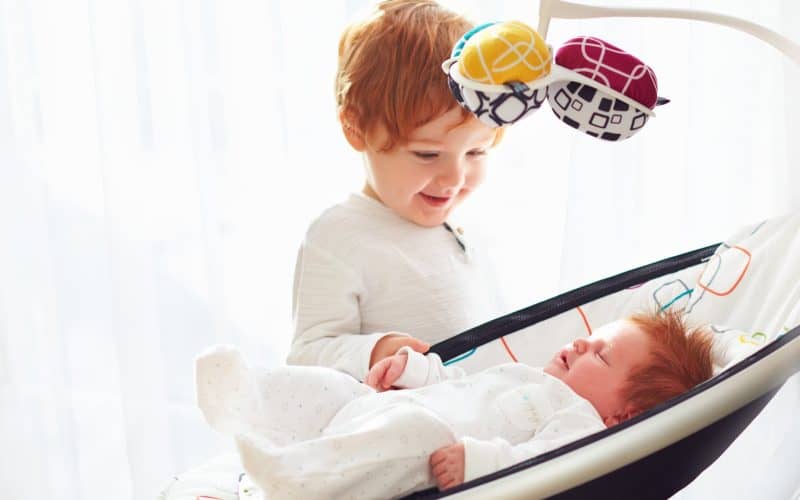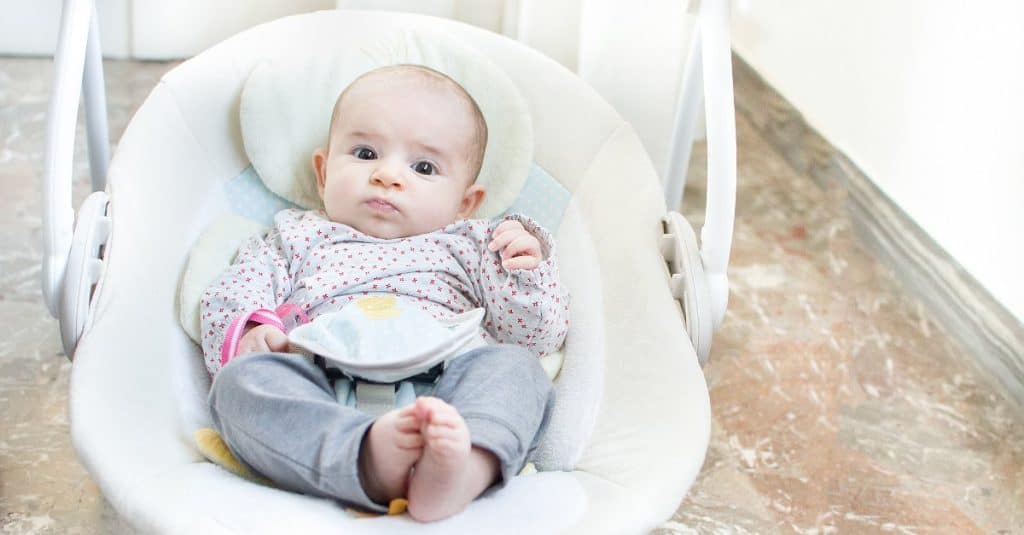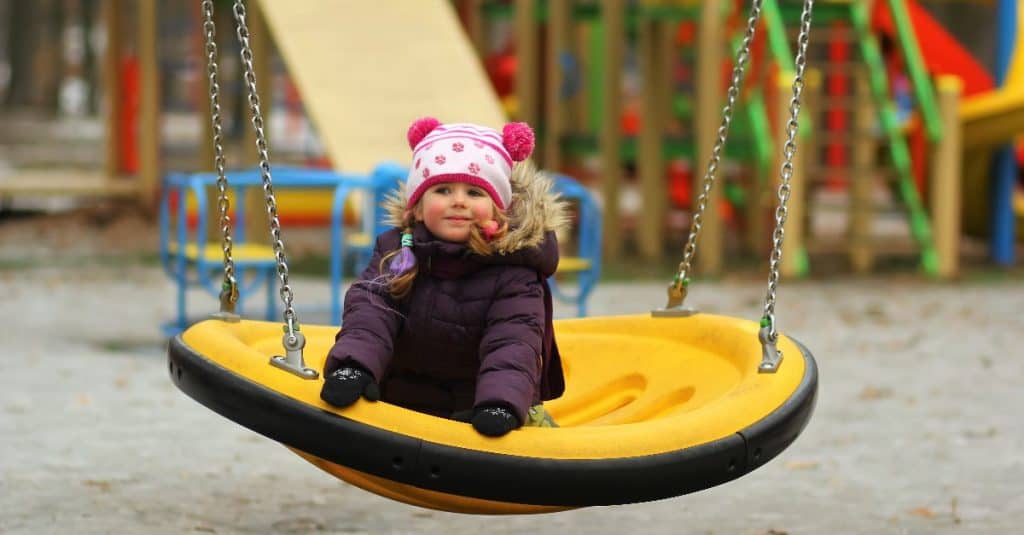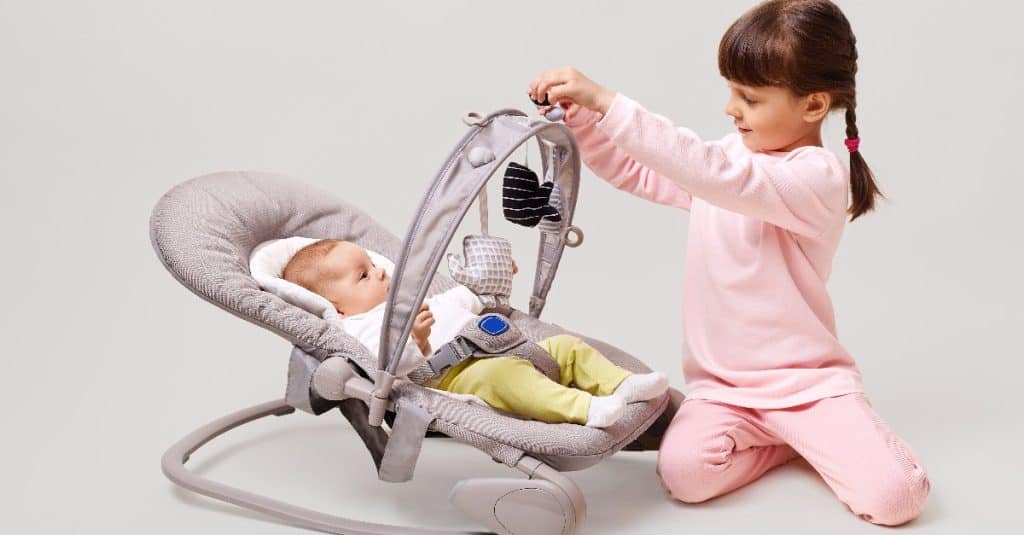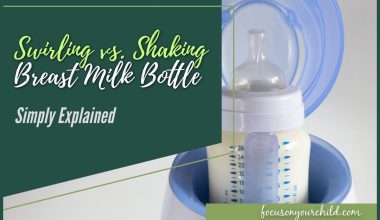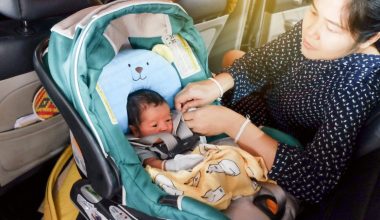When used correctly, a swing can be a parent’s best friend. They serve as a safe place for your baby to lay down in when your arms need a break. Babies also find their constant rocking motion soothing, and a swing can help a fussy baby calm down.
When do babies outgrow swings? Baby swings include instructions for age and weight limits with their products, in order to keep your baby as safe as possible. Most babies will outgrow swings when they are 9-12 months old, although some swings that can support more than 30 pounds might be used for a little longer.
Babies all grow at their own pace and you may need to retire the swing sooner than the manufacturer’s indications, or you might be able to use it for longer. Aside from the manufacturer’s guidelines, there are other indications that your baby has outgrown swings, including their mobility and comfort levels while seated in the swing.
What is a Baby Swing?
A baby swing is a type of infant furniture that is often used to help parents and caregivers calm fussy babies by creating a motion similar to that of being in a womb.
A baby swing is composed of 2 parts, a cradle in which a baby either lies down in or sits, and a frame that provides a swinging or rocking motion. Some swings are motorized and use either battery power or electricity to swing on their own, while others need to be powered by human arms.
Some swing models also come with hanging mobiles and toys to keep a baby entertained. You can even get models that play music and white noise.
Swings also have either 3-point or 5-point safety harnesses. The American Academy of Pediatrics (AAP) states that swings with an incline of more than 50 degrees require the use of a safety harness.
When Do Babies Outgrow Swings? (Age and Weight Limits)
Age
As babies age, they naturally become more curious and exploratory. They will need more space to exercise their curiosity and explore their surroundings outside the confines of a swing.
Some babies will outgrow the swing before they reach the age limit. They may eventually lose interest in the swing as it might no longer satisfy their need to play and explore their surroundings.
Note that some baby swings do not come with age limits, as infant development can vary greatly. If this is your case, follow the indicated weight limit and watch out for other markers that your baby has outgrown the swing.
There are also manufacturer guidelines for the minimum age at which a swing can be used. The AAP recommends that babies under 4 months of age are only placed in a swing in the most reclined position possible.
Baby’s Mobility and Swing Safety
A baby’s age roughly corresponds to their level of mobility, strength, and motor skills. As a baby becomes more mobile, parents and caregivers need to be even more watchful while they are in a swing.
Even if your baby has not yet exceeded the age and weight limits of their swing, they might have enough strength and mobility to climb out of it. A baby wiggling and trying to climb out of a swing can fall and potentially experience a head injury.
Your Baby Can Climb Out
This is fairly self-explanatory since a baby can easily topple a swing if they shift their weight far enough out of the cradle.
Once a baby has enough strength to push themselves up on their hands and knees and roll over, they will likely be able to make their way out of a swing, or at least attempt to do so with varying degrees of success. The same rule goes for a baby with enough torso strength to sit up unassisted.
Even if a swing has restraints that are strong enough to prevent your baby from climbing out, the motion generated from them attempting to break out could cause the swing frame to tip and fall over with them still inside.
Weight
Along with age limits, weight limits are usually indicated on the box or instruction manual the baby swing comes with. Most swings have a weight limit of around 25-30 pounds.
The amount of weight a swing can support varies based on each swing’s make and model. A swing should no longer be used once a baby outgrows the manufacturer’s weight limit.
Stop using the swing once your baby no longer fits into it or the straps cannot be secured properly. Check to see that the cradle is flat and that the frame remains steady while the swing is in motion.
Comfort Levels
Even though swings are made to comfort and soothe babies by mimicking a parent’s cradling and rocking, there are occasions when a baby may come to dislike being placed in one.
A baby who is fussy for one reason or another will squirm and move around much more than usual. They may attempt to crawl out of the swing, increasing the risk of them getting tangled in the restraints or tipping the swing and falling over.
A swing with a cradle that is too small can cause a baby to become uncomfortable. The same goes for straps and buckles, which may be fastened on too tight or too loose. Secure your baby into the swing with the same amount of tension that you would use to strap them into a car seat.
Other Tips For Safe Baby Swing Use
Always Supervise
Baby swings are excellent pieces of baby furniture, but are made to be used only under a caregiver’s supervision.
A baby can very easily fall asleep in an unsafe position in a swing, and an adult needs to be there to immediately correct the situation. Straps and hanging toys can tangle and hurt an unsupervised baby.
Only use accessories that come with and attach securely to the baby swing, and do not attach any other toys or mobiles to the swings. , and do not attach any other toys or mobiles to the swings.
30 Minutes at a Time
Baby swings should only be used for 30 minutes at a time and a maximum of 1 hour every day.
Spending too much time in a swing can flatten a baby’s head. Being strapped into a swing for long periods also limits the ever-important tummy time that helps their muscles strengthen and hit their motor milestones.
The amount of time you can use a swing in a single sitting also depends on your baby’s mood. Some babies only enjoy swinging for a few minutes at a time, while others might be content with swinging for longer periods.
It’s also crucial to address safety concerns related to baby swings, including the question of whether they can cause brain damage. While there is no conclusive evidence to suggest that baby swings directly cause brain damage, improper use or prolonged periods of swinging can potentially lead to injury. It is vital for parents to follow the manufacturer’s guidelines and supervise their baby while using the swing to mitigate any risks.
Sometimes, parents may become overly reliant on a swing as a soothing device. Before using a swing to quiet and soothe a fussy baby, make sure there are no other easily remediable reasons for them to be uncomfortable, such as being hungry, needing a diaper change, or feeling too warm or too cold.
Not for Sleeping
Baby swings, bouncers, and car seats are known as sitting devices. A study published by the AAP showed that 3% of all sleep-related SIDS deaths occurred while a baby was in a sitting device.
Outside of traveling purposes, babies should not be left to sleep in a sitting device. For example, falling asleep in a car seat while on a short car ride is safe, as long as the baby is transferred to a safe sleeping surface as soon as possible.
Sitting devices are not suitable for sleep, and should not be used the way a crib or bassinet would be used for sleeping. A sleeping baby’s head can fall forward and restrict their airway, causing difficulty breathing.
It is safe to use a baby swing to help a baby get to sleep. It is also okay if your baby does happen to fall asleep in a swing. Make sure that you are there at all times to supervise, and move them to a crib where they can sleep flat on their back alone as soon as they are asleep.
Only On the Floor
Swings should only be used on a flat and level floor and never on tables and countertops. Because force increases with distance, a swing falling over from an elevated surface is much more dangerous than a fall from the floor would be.
